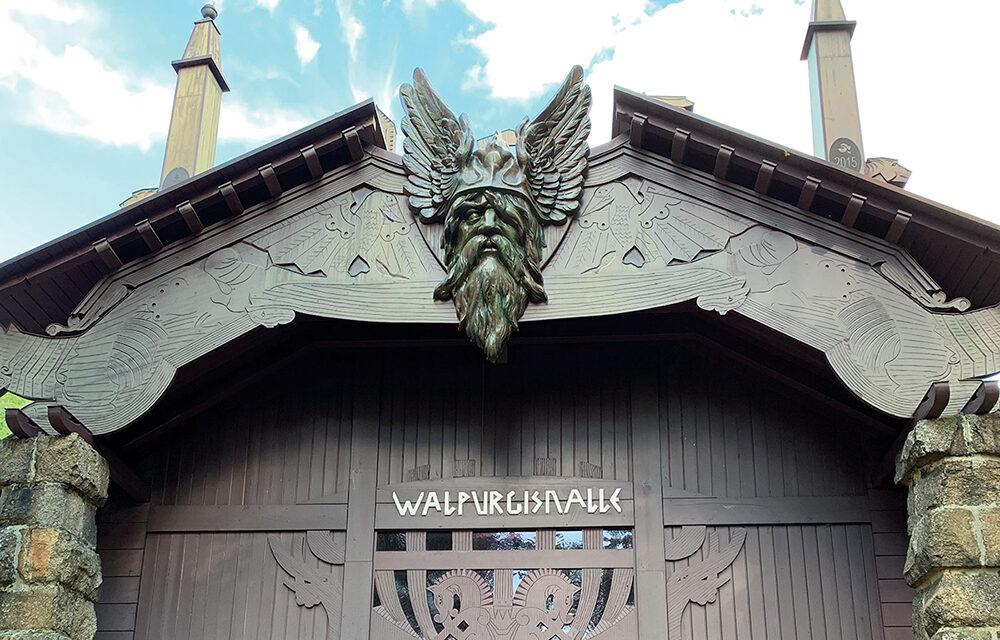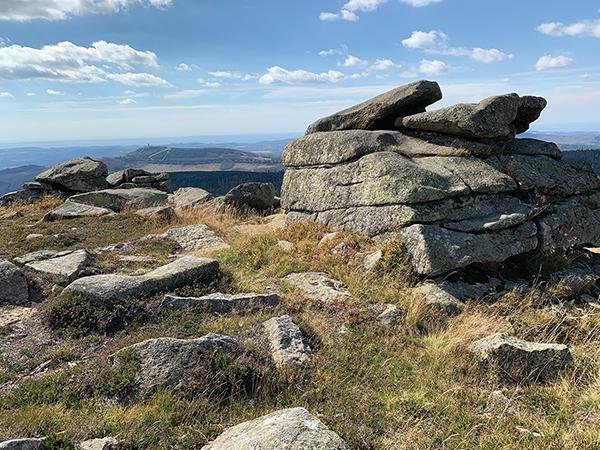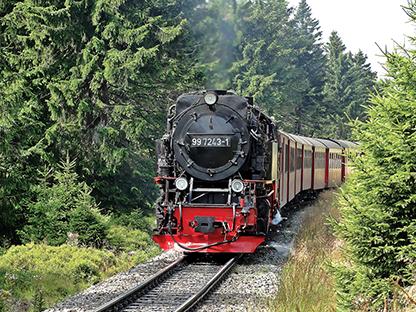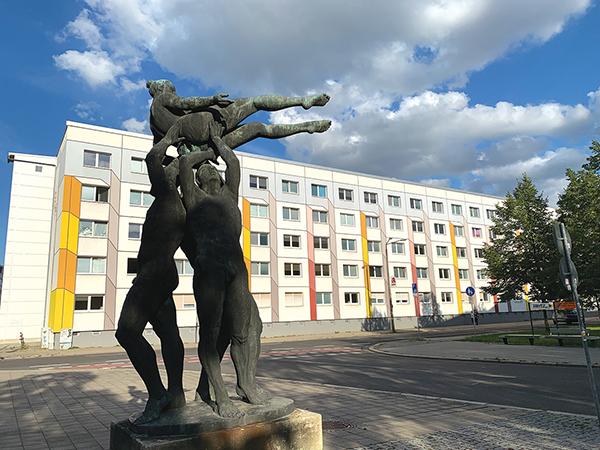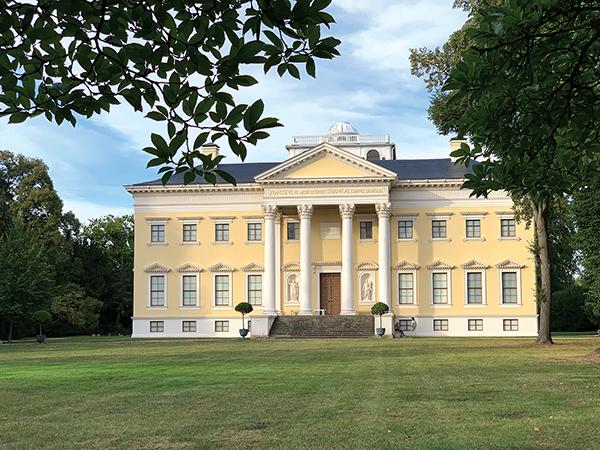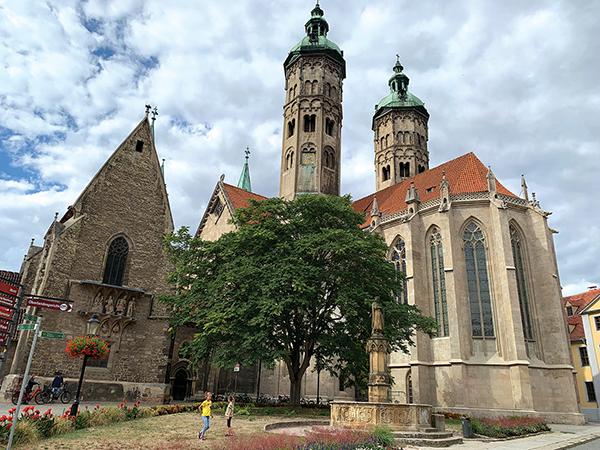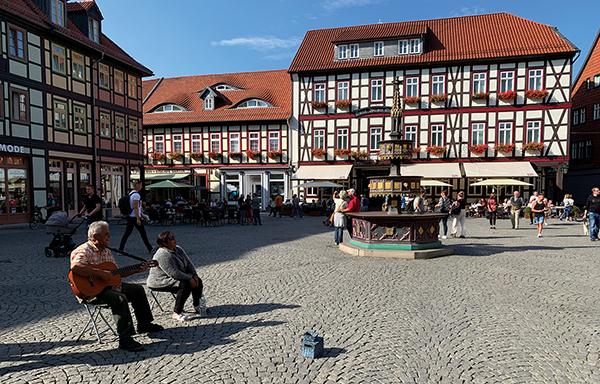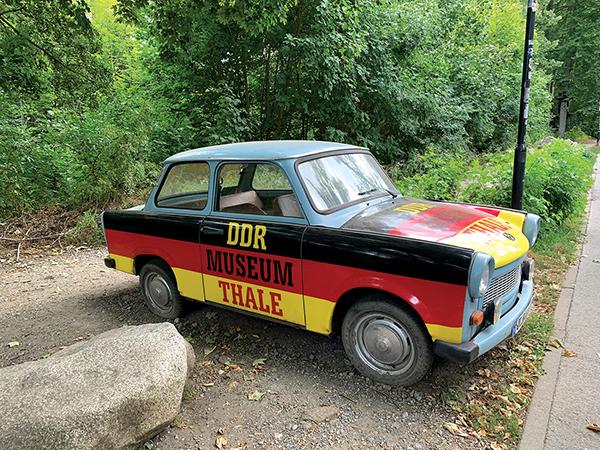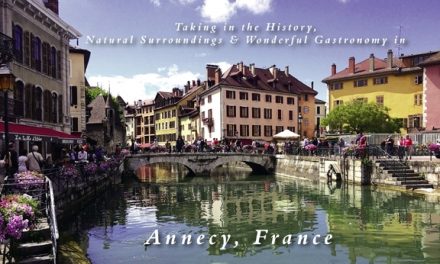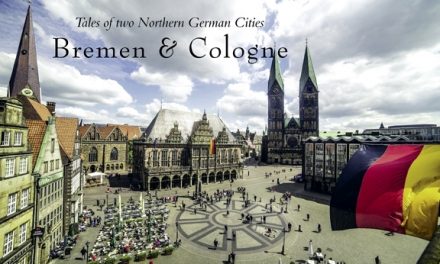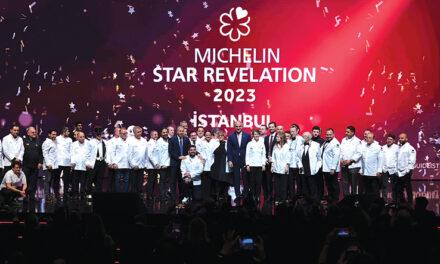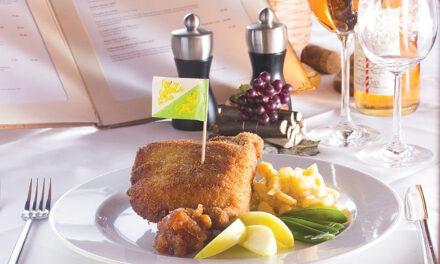Germany
Travels in Germany: The Bewitching Treasures of Saxony-Anhalt
Article and photography by Jennifer Merrick
“Welcome to the windiest place in Germany,” our guide announced.
We had just got off the steam train that had chugged us up Mount Brocken and as the gusts whipped our hair in all directions, we learned about the mountain and the park.
At 1441 metres, Brocken had the highest peak in the Harz Mountains and was the focal point Harz National Park, a 24,700-hectare nature reserve known for its ecologically diverse landscape, mythical legends and hiking trails. Established in 1990 after the reunification of Germany, it spanned two states, included six vegetation zones and had not only the windiest weather in Germany but the foggiest. About 300 days a year here at the peak, our guide told us.
But today wasn’t one of them and we were treated to panoramic views of the surrounding hills and the vast plateau of the North German Basin far in the distance. Closer were the narrow railway tracks that had brought us up here.
Riding the Harz Narrow-Gauge Railroad had brought out the kid in all of us, and the hour and half journey flew by as we moved inside and outside the carriages, taking pictures of the 1950s coal-burning locomotive as it wound its way up the mountain. Now, we walked along the mountain’s broad summit, watching serious hikers walking briskly with hiking poles as well as families and friends strolling at a leisurely pace.
The mountain with its eerie light and mists was steeped in German folklore. On the left, were large boulder formations with bizarre shapes that had been the muse for stories of mountain spirits and witches. In his poem Faust, Goethe wrote, “let’s meet the legendary Brocken witches right here at the rock formations Devil’s Chancel and Witch’s Altar.”
On the right, in contrast to this mystic scene, was a collection of buildings that looked like it belonged on a set of a futuristic sci-fi movie with two imposing transmission towers. From 1961 until 1989 the Stasi and Soviet Army operated a listening post on the mountain, which formed part of the border between East and West Germany. An exhibit at the park’s Brockenhaus Museum chronicled this era with displays that included equipment, uniforms and a cement block that was part of the wall. This mountain was very much a symbol of Germany’s reunification and engraved in a boulder on the summit is Der Brocken wieder frei (Brocken is free again).
Looking at the multitude of people enjoying themselves at the mountain top, it was hard to imagine it being off limits for so many years, guarded with barbed wired and electric fences, hidden behind the Iron Curtain.
Having explored a bit of the Saxony-Anhalt state in the past week, I couldn’t help but think that despite being open for more than 30 years, the region was still largely unknown among international travellers like myself, hiding in the shadows of bigger German attractions.
“A lot of tourists only come for the three Bs,” said local guide, Thomas Hesse. “Berlin, Bratwurst and beer.” All good things, of course, but there was much more. In Saxony-Anhalt, I discovered a region rich in history with the largest concentration of UNESCO heritage sites in Germany, colourful postcard-perfect towns and legendary places of natural wonder.
Here were just a few of the highlights:
Biking in and around Dessau
Biking has been a popular pursuit in this city ever since its famous artists and instructors at the Bauhaus School of Architecture were pedaling on its city streets in the 1920s. Cycle in town to see the Bauhaus building and Masters’ houses that have been designated a UNESCO World Heritage Site. Or head out on the extensive bike path system along the Elbe and Mulde rivers, and into the surrounding nature. The Elbe Cycle Route connects many of the region’s best attractions, including the Middle Elbe Biosphere Reserve, and stretches 840 kilometres between Bad Schandau and Cuxhaven.
Dining on a gondola on Lake Worlitz
As romantic as it comes, this sunset gondola ride glides you around the lake in Dessau-Wörlitz Garden Kingdom as you wine and dine aboard. It’s simply a delightful way to view this UNESCO World Heritage Site, which boasts one of Europe’s best-designed gardens, palaces, sculptures, temples and graceful swans that follow the gondola hoping for a bit of bread.
Discovering the riches of Naumburg Cathedral
Yet another UNESCO World Heritage Site, this 13-century cathedral houses so many marvels that it’s impossible to delve into them all. Not only is the architecture striking, vividly illustrating the stylistic and societal differences between the Romanesque and early Gothic eras, but there are countless other treasures, including the Uta sculpture that was the inspiration for Walt Disney’s evil queen in Snow White, the newly installed controversial altarpiece painting and one of the oldest chained libraries in Europe with manuscripts dating back to 976 AD.
Sipping vino in Germany’s northernmost wine region
In the town of Freyburg, just north of Naumburg, the grapes grow on slopes so steep, it’s hard to imagine how they’re harvested. At the Freyburg-Unstrut Winery, perch yourself on a picnic table overlooking the town and sample a few of the white and sparkling wines this region is famous for. Try out more wine at the Freylich Zahn Wine Hotel and Winery. This stylish modern hotel is a wine lover’s delight with a curated collection of bottles in the room and an extensive wine menu at Restaurant 51° served up with top-notch international cuisine.
Exploring the colourful town of Wernigerode
Located in the Hartz district, Wernigerode is the European town North Americans picture when dreaming about the continent: narrow cobblestone streets lined with half-timbered houses dating back to the 16th century, a market square overflowing with sidewalk cafes with a gothic town hall as a centre piece and a castle overlooking it all. End a day of sightseeing with a meal to remember at Gothisches Haus, the city’s oldest hotel.
Falling under the spell of Rosstrappe and Hexentanzplatz (Witches’ Dance Floor)
Looking down into Bode Valley with its jagged volcanic rock and granite boulders, it’s easy to understand why these mountains near the town of Thale have spawned so many legends and tales. From the base of the mountain, a chairlift takes visitors to Rosstrappe, where a large hoofprint is testament to the legendary giants who made this gorge their home once upon a time. Not only giants but witches inhabited and worshipped here. At Hexentanzplatz, which can be reached via gondola, tour the Walpurgis Hall (Witch Hall), whose walls are painted with murals of eerie witchy scenes. On Walpurgisnacht (Witches’ Night), celebrated April 30th, modern witches and revellers gather to dance at this pagan worship spot. But most visitors come here year-round to hike and enjoy the dramatic scenery that inspired the tales.
Whether giants or witches exist or existed in these magical places may be up for debate, however there’s no doubt that Saxony-Anhalt cast a spell on me with its entrancing natural and cultural attractions.

